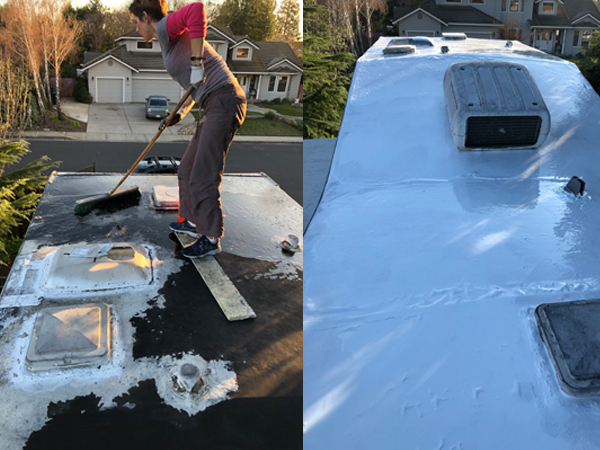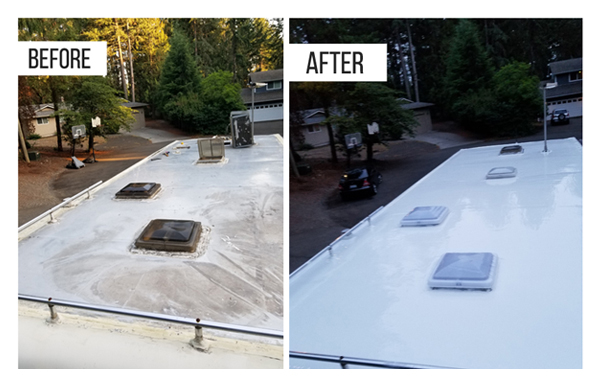Roof maintenance is a big part of RV ownership, but it is, unfortunately, something that often goes overlooked by many. Did you know that water damage is one of the leading causes of disrepair for RVs and motorhomes? The cost of fixing what seems like a simple leak can get a little out of control if you don’t address things promptly, so don’t wait until three to five years have passed and it’s time to reseal your roof before going up there to inspect what’s going on.
In fact, part of keeping a safe, secure motorhome roof is performing regular routine inspections and cleanings, usually about three or four times a year. Those who use their RVs more often or who don’t have indoor storage may want to check for damage or disrepair more often, just to be safe. During your inspection, you’ll be able to check for things like:
- Damaged or brittle seals and caulk around vents and other units that are installed on the roof
- Cracks or missing pieces of caulking or sealant
- Tears in the rubber roof membrane that need to be repaired
- Large tears or gouges that reach all the way to the decking and require more extensive repairs or a full replacement
- Whether it’s time to just do a full re-coat with a new, high-tech motorhome roof sealant that is designed to offer even more protection for your RV for many years to come
What Sealants are People Using?
A lot of RV enthusiasts prefer Dicor caulking and sealant for their roof repair and maintenance needs; it certainly isn’t the only product available on the market today. There are a number of different caulks and silicone sealants that you can choose from to help protect your RV from leaks and water damage. For the best results, consult your owner’s manual and make sure that you choose a product that is compatible with your roofing material.
The most common types of sealants and caulks used are typically going to be made of some kind of synthetic rubber or acrylic formula that is designed to provide water resistance, protection from debris and damage, and even UV protection to help extend the lifespan of your motorhome roof. These sealants also have insulative properties, guaranteeing that you are doing a lot of good for your RV when you use them.
The top materials include:
- EPDM rubber
- TPO rubber
- Silicone and Acrylic (for caulks and seam sealants)
- Elastomeric coatings (an elasticized EPDM product)
What’s Next: Does Your Roof Need Some TLC?
Knowing more about the different types of motorhome roof sealant options that you have today, it may be easier for you to decide whether it’s time to upgrade your RV roof. Take the time to explore the products on the market and feel free to ask around in the community to see what others recommend. Sometimes, you’ll get the best tools and tips from other RV owners, so don’t hesitate to reach out. Choose a sealant that suits your needs and provides the level of protection that your motorhome needs.
You can extend the life of your motorhome roof and its sealants by storing it properly. Keep it in a covered space or a climate-controlled garage for the best possible protection. At the very least, invest in a carport or fabric RV cover that will provide additional protection from the elements when the RV is parked for an extended period of time. One of the best ways to extend the life of your sealants and roof coatings is to take a proactive approach and maintain your roof from the very start.



